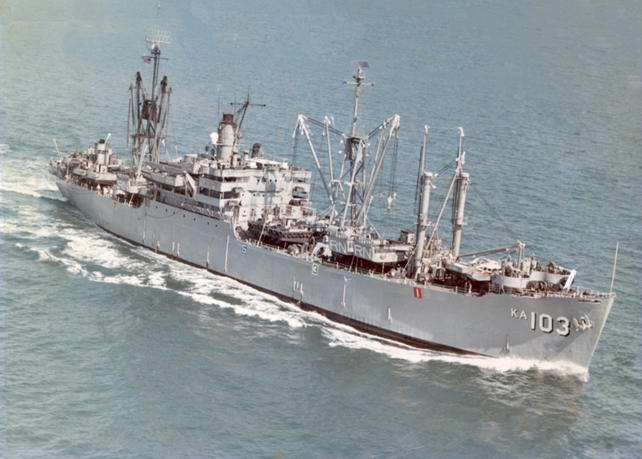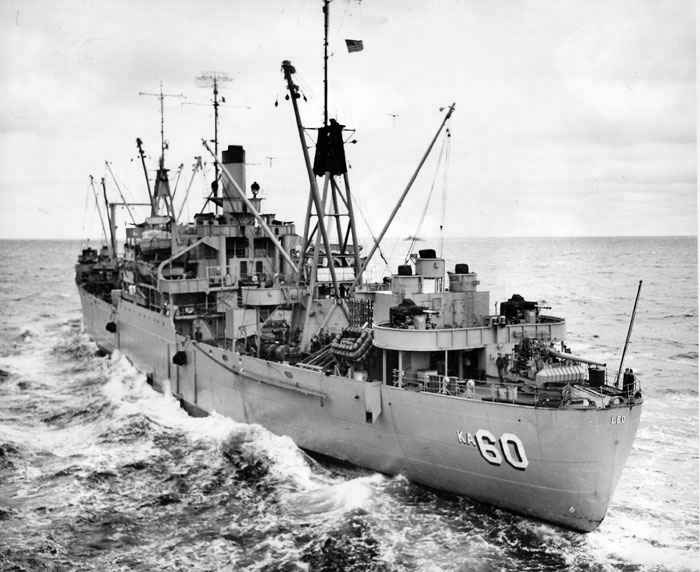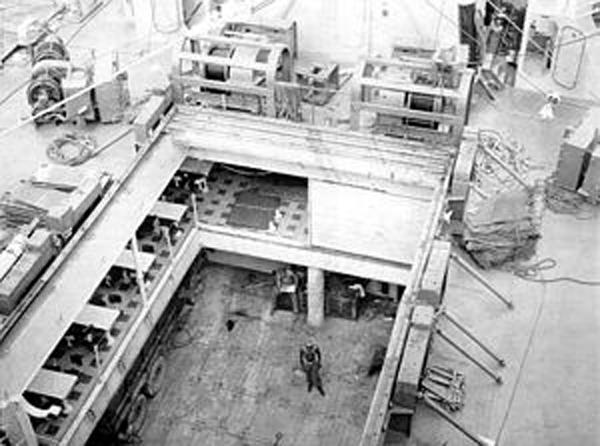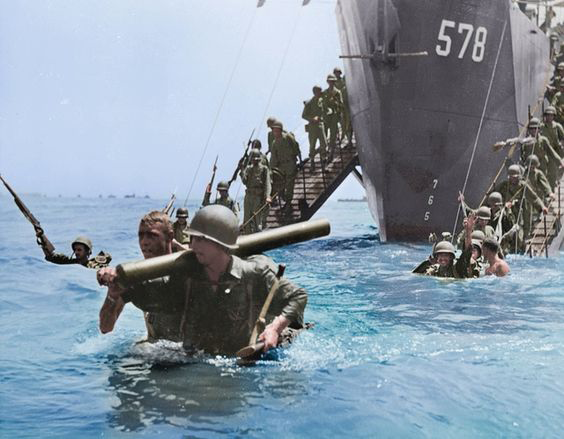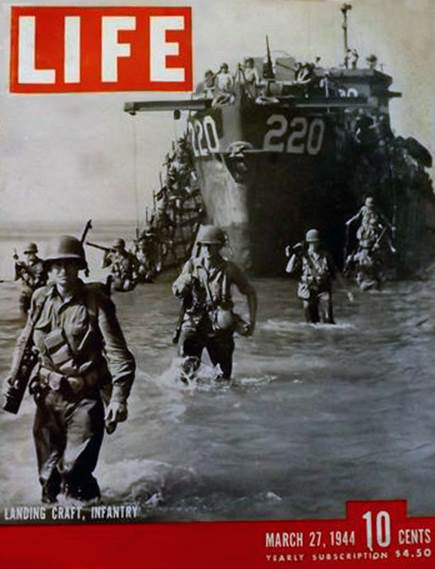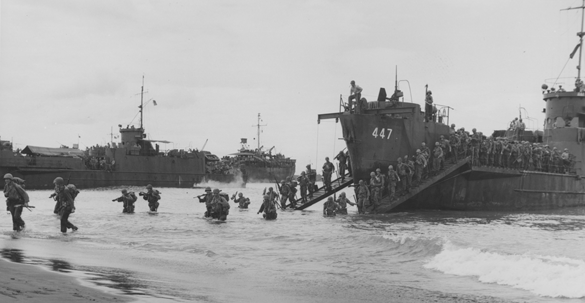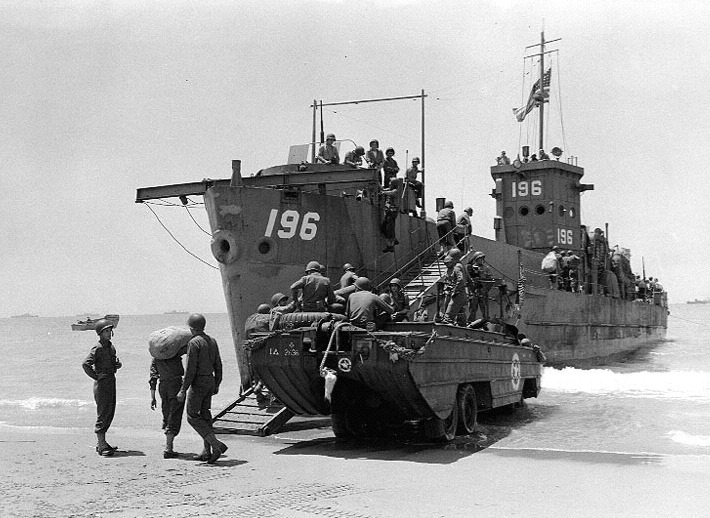

What is an APA?
More properly speaking, what was an APA? APA was the Navy's designation for an attack transport. "APA" stood for Auxiliary Personnel, Attack. These were the ships that carried troops into battle with the use of separate landing craft. APAs were used in the D-Day invasion of Normandy and in every landing in the Pacific war's island-hopping campaign. Some of these ships later served in Korea and in Vietnam.
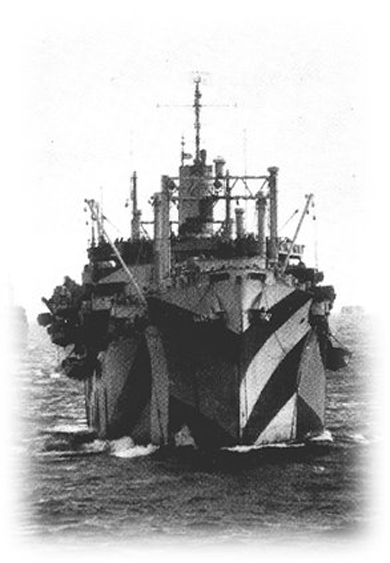
USS Elmore (APA-42) underway (date and location unknown). Her camouflage is Measure 32 Design 16D.
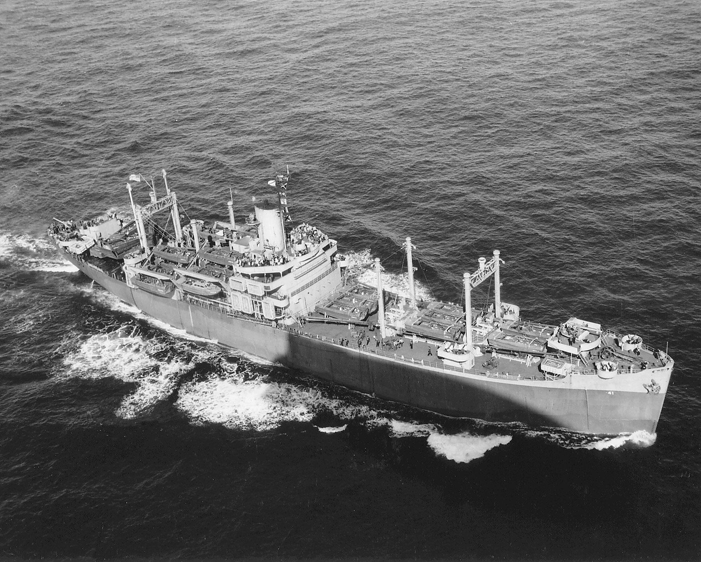
USS DuPage (APA-41), a Bayfield class attack transport and sister ship to Elmore, underway (date and location unknown).
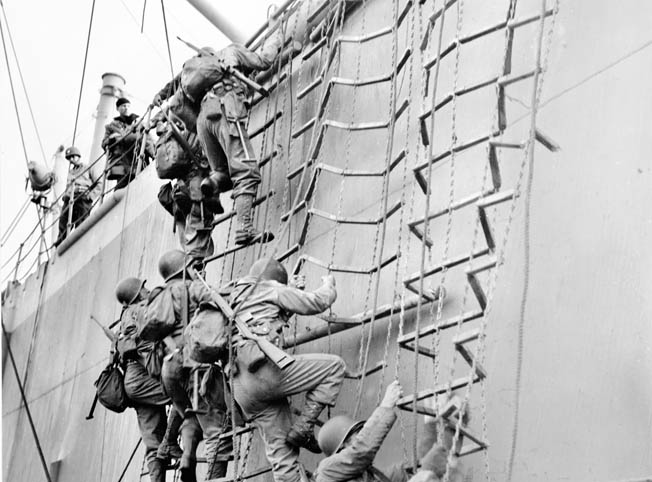
Army troops climbing down a rope ladder into a Higgins boat in preparation for an invasion landing. Rope provided the advantage of flexibility in storing rope nets and, more importantly, the much higher throughput the wide net allowed versus a bunch of steel ladders. Steel is heavier, more rigid, hotter or colder to the touch, harder to hold on to, harder to store, more difficult to repair and replace and will tend to rock with the ship that it is attached to rather than hanging vertically, and could easily damage the landing craft the soldiers are descending to. Sometimes, low-tech solutions work best.
Source: Wikipedia
The Attack transport was a United States Navy ship classification for a variant of ocean-going troopship adapted to transporting invasion forces ashore. Unlike standard troopships – often drafted from the merchant fleet – that rely on either a quay or tenders, attack transports carried their own fleet of landing craft.
They are not to be confused with landing ships, which beach themselves to bring their troops directly ashore, or their general British equivalent, the Landing Ship, Infantry (LSI).
A total of 388 APA (troop) and AKA (cargo) attack transports were built for service in World War II in at least fifteen classes. Depending on class they were armed with one or two 5-inch guns and a variety of 40 mm and 20 mm anti-aircraft weapons.
By the late 1960s, 41 of these ships were redesignated as "Amphibious Transports", with the hull code "(LPA)", and another 13 ships were redesignated as "Amphibious Transport, Small" with hull code "(LPR)", but they all retained their names and hull numbers.
Classification
"In the early 1940s, as the United States Navy expanded in response to the threat of involvement in World War II, a number of civilian passenger ships and some freighters were acquired, converted to transports and given hull numbers in the AP series. Some of these were outfitted with heavy boat davits and other arrangements to enable them to handle landing craft for amphibious assault operations.
In 1942, when the AP number series had already extended beyond 100, it was decided that these amphibious warfare ships really constituted a separate category of warship from conventional transports. Therefore, the new classification of attack transport (APA) was created and numbers assigned to fifty-eight APs (AP #s 2, 8-12, 14-18, 25-27, 30, 34-35, 37-40, 48-52, 55-60, 64-65 and 78-101) then in commission or under construction.
The actual reclassification of these ships was not implemented until February 1943, by which time two ships that had APA numbers assigned (USS Joseph Hewes and USS Edward Rutledge) had been lost. Another two transports sunk in 1942, USS George F. Elliott and USS Leedstown, were also configured as attack transports but did not survive to be reclassified as such.
As World War II went on, dozens of new construction merchant ships of the United States Maritime Commission's S4, C2, C3 and VC2 ("Victory") types were converted to attack transports, taking the list of APA numbers to 247, though fourteen ships (APAs 181-186 and APAs 240-247) were cancelled before completion. In addition, as part of the 1950s modernization of the Navy's amphibious force with faster ships, two more attack transports (APA-248 and APA-249) were converted from new Mariner-class freighters.
Mission of an Attack Transport
The mission of an Attack Transport was to combat-load assigned troops and their equipment, to transport them in landing craft and landing boats on enemy beaches in accordance with established doctrine and the tactical plan of the Landing Force Commander. It was then the transport’s duty to evacuate troops, causalities and prisoners of war, as directed, and to provide medical care for the wounded.
It was also the mission of the Attack Transport to provide and train the beach liaison party for a Battalion Landing Team; to provide boats and to train the boat crews for execution of the ship-to-shore movement and, finally, to train troops in the technique of amphibious landing attack operations.
Demise
By the end of the 1950s, it was clear that boats would soon be superseded by amphibious tractors (LVTs) and air assault helicopters for landing combat assault troops. These could not be supported by attack transports in the numbers required, and new categories of amphibious ships began to replace APAs throughout the 1960s. By 1969, when the surviving attack transports were redesignated as "amphibious transports" (LPA) (retaining their previous numbers), only a few remained in commissioned service. The last of these were decommissioned in 1980 and sold abroad, leaving only a few thoroughly obsolete World War II era hulls still laid up in the Maritime Administration's reserve fleet. The APA/LPA designation may, therefore, now be safely considered extinct.
Source: Wikipedia



